Transcription of System Initiative on Shaping the Future of Production ...
1 System Initiative on Shaping the Future of Production Impact of the Fourth Industrial Revolution on Supply Chains October 2017. World Economic Forum 91-93 route de la Capite CH-1223 Cologny/Geneva Switzerland Tel.: +41 (0)22 869 1212. Fax: +41 (0)22 786 2744. Email: World Economic Forum . 2017 All rights reserved. No part of this publication may be reproduced or transmitted in any form or by any means, including photocopying and recording, or by any information storage and retrieval System . REF 061117 00035015. Table of Content Introduction 3 Introduction At the World Economic Forum Annual Meeting 2017 in Davos-Klosters, Switzerland, the Governors1 of the Supply 4 Overview and background Chain and Transport Community, and the Stewardship 5 Key Fourth Industrial Revolution technologies Board 2 of the System Initiative on Shaping the Future of Production mandated the World Economic Forum (the 8 Technological impact on value chains Forum)
2 To conduct consultations and research to understand 13 Technological impact on logistics the impact of the Fourth Industrial Revolution on the Future of 15 Challenges to technological advancement Production and supply chains. 16 Implications for the environment The Fourth Industrial Revolution is characterized by the 17 Implications for jobs convergence of breakthrough technologies such as advanced robotics, artificial intelligence, the internet of 18 Preliminary considerations for Fourth Industrial things, virtual and augmented reality, wearables and Revolution-driven supply chains additive manufacturing that are transforming productions 19 Contributors processes and business models across different industries.
3 Business leaders can no longer focus on developments and 20 Endnotes trends in their own sectors alone, but need to understand potential transformations and disruptions in the entire world of suppliers, customers and adjacent markets. In collaboration with the German logistics association BVL International, the Forum has prepared this white paper to outline potential transformations and disruptive developments that technology will bring to the Future of Production and supply chains across industry sectors. It summarizes the findings gathered by means of consultations and desk research and will be used to inform the discussions that will take place at the 34th International Supply Chain Conference3, organized by BVL International in October 2017 in Berlin, and at the World Economic Forum Annual Meeting 20184 in Davos-Klosters.
4 Impact of the Fourth Industrial Revolution on Supply Chains 3. Overview and background Disruptive technologies are transforming all end-to-end The resulting greater spatial and temporal flexibility brought steps in production5 and business models in most sectors about by technology will bring locations of Production and of the economy. The products that consumers demand, sale closer together, and drive major changes in the design factory processes and footprints, and the management of Future value and supply chains. These trends will change of global supply chains are being re-shaped to an the shape and form of globalization, and thereby impact the unprecedented degree and at unprecedented pace.
5 Industry trajectory of goods. Regional and local flows will become leaders who were consulted believe that new technological more important, to the detriment of intercontinental trade. solutions heralded by the Fourth Industrial Revolution such as advanced robotics, autonomous systems and additive manufacturing will revolutionize traditional ways of creating value. As the costs of deploying technology continue to fall, international differentials in labour costs will no longer be a decisive factor in choosing the location of Production . Figure 1: The supply chain at the centre of the digital enterprise6. Source: Strategy&. Through the consultation carried out by the Forum and BVL Inputs from business leaders and subject-matter experts International, senior executives including chief operating informed the identification and definition of the following officers, chief technology officers and chief innovation Future developments in Production and supply chain.
6 Officers from various industries provided their perspectives and examples of the main areas across value chains that are subject to transformation and disruption as a consequence of the individual and combined adoption of technologies. 4 Impact of the Fourth Industrial Revolution on Supply Chains Key Fourth Industrial Revolution technologies A vast range of these technologies are already impacting The ongoing digital transformation of industries also brings Production systems and supply chains. Combined new opportunities for innovative business models. The and connected, these technologies will open up new majority of companies in the manufacturing sector ( ).
7 Opportunities for creating value across multiple dimensions and the logistics industry ( ) see positive effects for the individual, society, industries, firms and the factory resulting from digital transformation (see Figure 2). Figure 2: Expected impact of digital transformation on the cost situation in companies8. Source: BVL International There is a correlation between the relevance of new IoT platforms which allow for the tracking of all assets and technologies and the speed of implementation of novel devices in real time , are but some case examples of IoT. business model solutions. Change in current supply chains applications. Smart enterprise control, asset performance is driven by operating and new technologies.
8 Figure 3 management and augmented operators are other areas of landscapes this correlation. application. The opportunities will only grow with the growth of intelligent interconnected assets and devices worldwide. Five key technologies, which are currently at different stages in terms of level of readiness and adoption across Connected devices ensure the availability of real- time industry sectors, are expected to significantly impact supply data, enable the geographic distribution of operations and chains, both individually and in combination: internet of manufacturing, and result in improvements in operational things, artificial intelligence, advanced robotics, enterprise efficiency, processing time and operating and management wearables and additive manufacturing.
9 Costs. They are, however, also prone to cyber risk, which exerts pressure on both government and business leaders The internet of things (IoT) is the virtual interconnection to implement appropriate security and privacy policies of intelligent assets and devices to achieve improved user across organizations, manufacturing networks and supply experience and/or usability. According to Gartner, there will chains. be over billion interconnected devices worldwide by Devices that generate data on a continuous basis are at the core and forefront of the digital transformation of supply chains. Interconnected warehouses that are linked to intelligent transportation systems, and the introduction of Impact of the Fourth Industrial Revolution on Supply Chains 5.
10 Figure 3: The relevance and implementation status of the technological concepts studied 10. Source: BVL International While the impact of IoT in the next five years is considered whether this is a robot installed in a factory or a distribution to be high by business leaders11, experts consider the warehouse. current degree of implementation of IoT applications across businesses and organizations to be Machine-generated insights will pave the way for greater precision and accuracy. While repetitive tasks are performed Artificial intelligence (AI) or self-learning systems is the by machines, people can focus on more complex activities. collective term for machines that replicate the cognitive Physical assets replace low-skilled labour, which requires abilities of human beings.
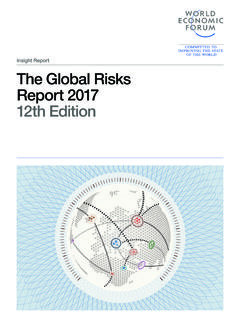



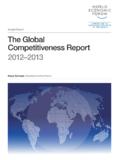




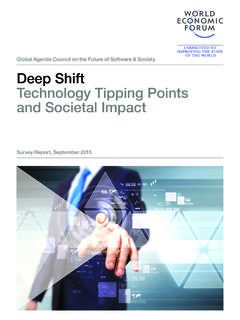


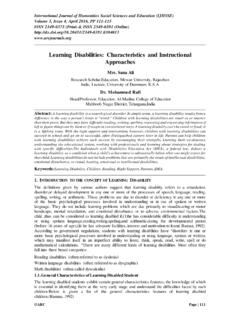
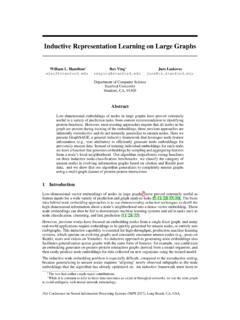
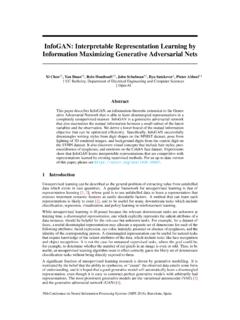

![arXiv:1706.02216v4 [cs.SI] 10 Sep 2018](/cache/preview/9/a/6/8/0/7/1/d/thumb-9a68071d73afd8997ff3a74956baa9eb.jpg)


